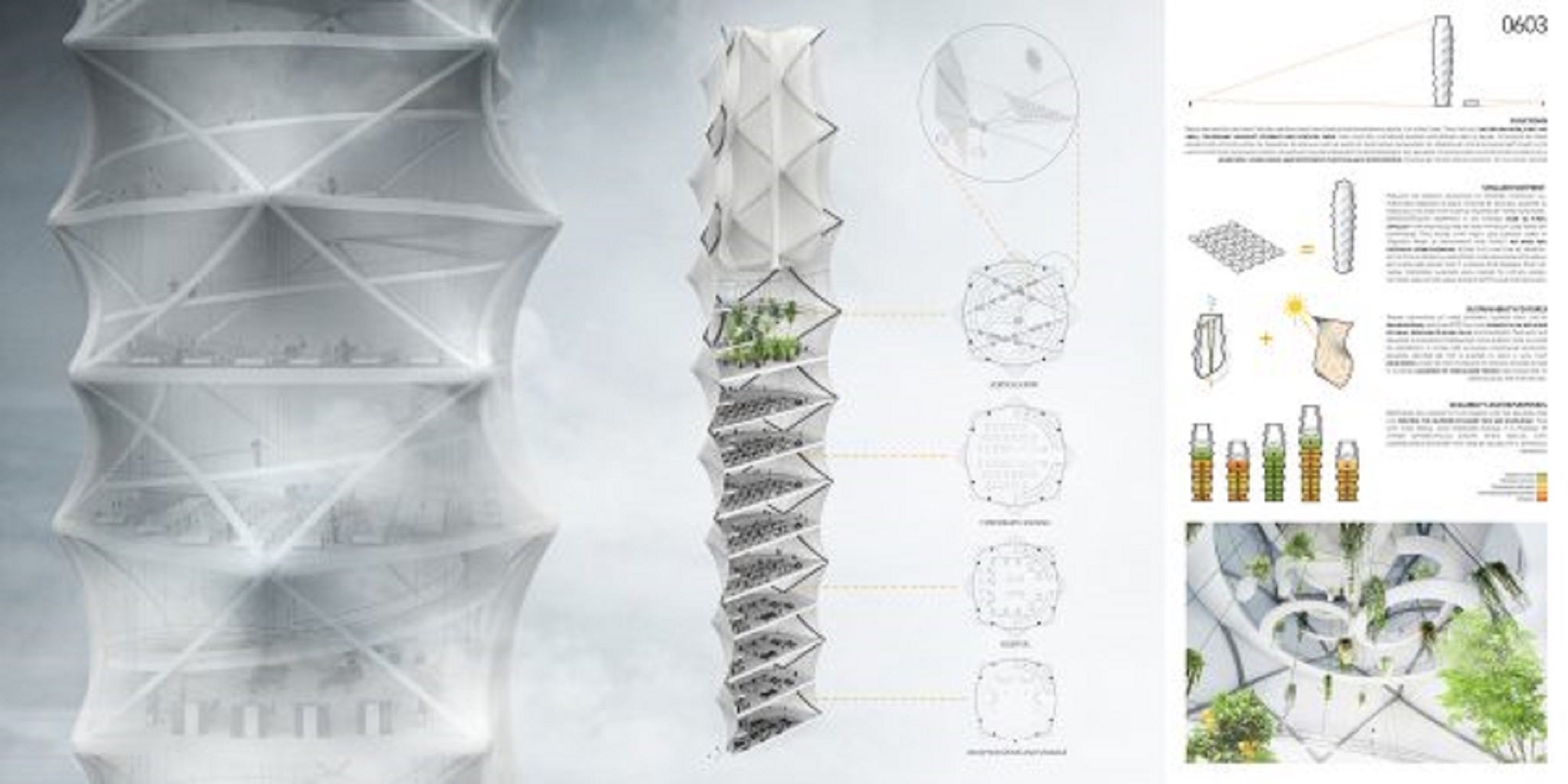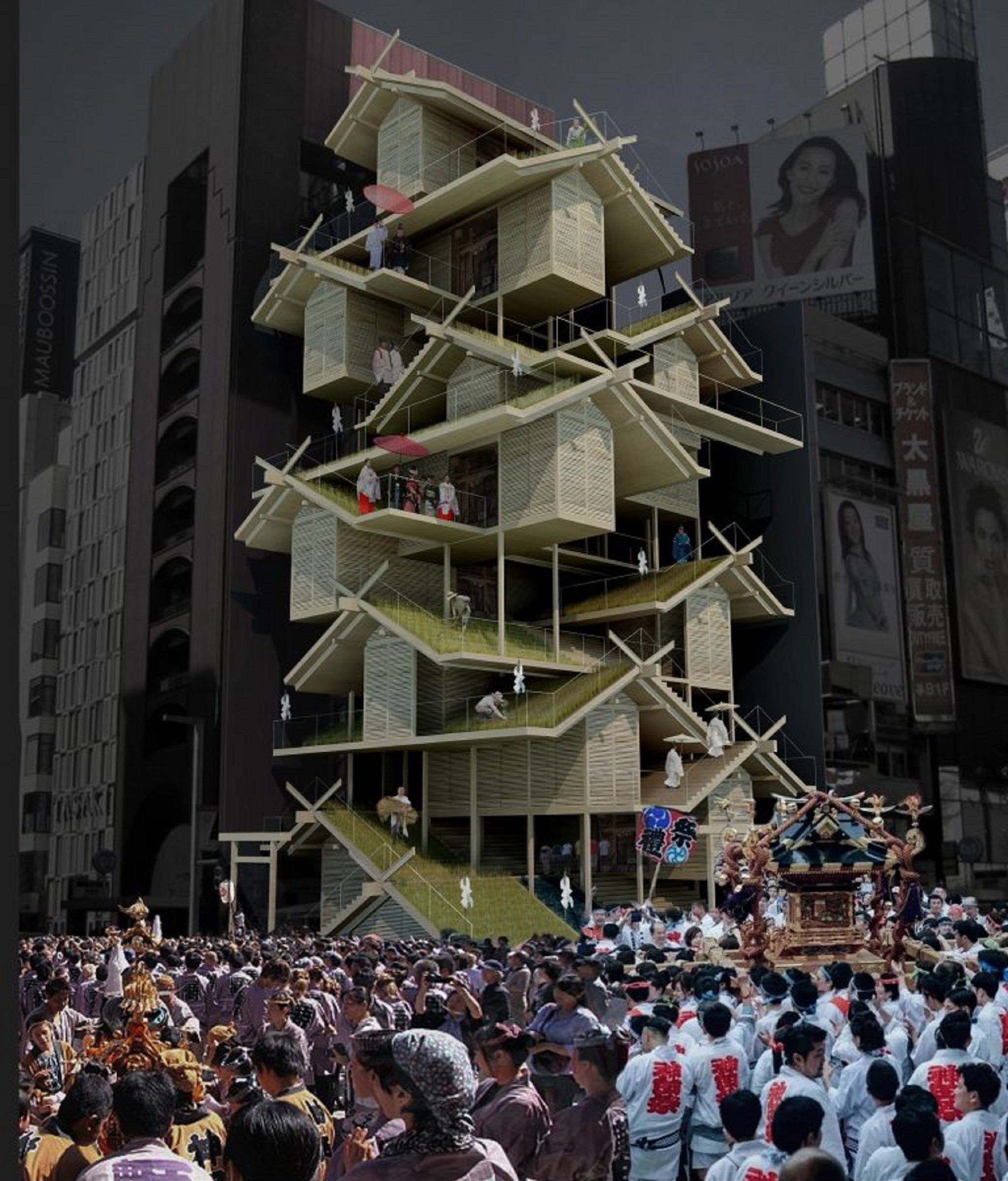Origami-inspired skyscraper which can be folded and flown into disaster zones wins architecture competition
"When dealing with forces so powerful, standard means of crisis-management often prove to be inefficient"
An origami inspired skyscraper design which can be dropped into disaster zones to provide temporary shelter has won a competition.
Skyshelter.zip is a foldable structure which can be neatly packaged into a box and carried to disaster zones by helicopter.
Once there, the skyscraper can be anchored to the ground even on unstable soil and almost instantly inflated by a large helium balloon inside.
Polish designers Damian Granosik, Jakub Kulisa and Piotr Pańczyk recently won first place for the idea in eVolo Magazine’s 2018 Skyscraper Competition after fighting off competition from 525 other projects.
The Skyshelter.zip footprint is on average 30 times smaller than the tents or containers typically used in similar situations.
This means that much less clean-up work is required prior to setting up the camp.
The designers said this was especially important in densely-populated areas – but also meant that temporary shelters could be set up closer to victims’ original homes.
After anchoring basic supports to the ground, the structure unfolds thanks to a large load-bearing helium balloon placed within to protect it from external forces.

Depending on the amount of gas pumped into the balloon, the number of floors can be controlled as they are unfolding.
In a written submission for the competition, the designers explained the concept behind their creation.
“More and more natural disasters happen annually across the world,” they wrote.
“When dealing with forces so powerful, standard means of crisis-management often prove to be inefficient.
“Whether a certain region is struck by earthquake, flood or hurricane – help needs to arrive quickly.
“This is often easier said than done, as damages to transportation infrastructure or remote localisation can make it extremely difficult.
“The Skyshelter.zip tries to address these issues by proposing structure that, while offering a large floor surface, is compact, easy to transport anywhere and can be deployed with a minimum amount of time and manpower requirements.
“It is meant to serve as multi-purpose hub for any relief operation.”
Tony Leung, from Hong Kong, scooped second place with his Shinto Shrine Skyscraper.

His design aimed to restore the traditional interactions between a Shinto Shrine and the local people in Ginza, Tokyo, with an urban building for rice farming, spiritual meditation and community development.
Third place went to Claudio Araya Arias from Chile for his Waria Lemuy: Fire Prevention Skyscraper which proposed a new idea for vertical housing in areas damaged by wild fires.
The project made use of passive systems to mitigate wind and disperse water to prevent new fires.
Also commended were designs that included sandscrapers to prevent desertification, floating skyscrapers that transform ocean water into fresh water, towers that collect fog in arid regions, 3D printed buildings, and volcano skyscrapers.
Join our commenting forum
Join thought-provoking conversations, follow other Independent readers and see their replies
Comments
Bookmark popover
Removed from bookmarks